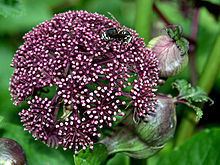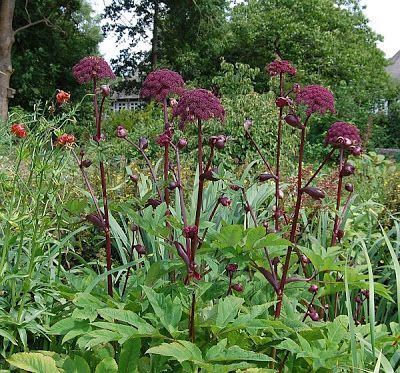Rank Species | Genus Angelica Higher classification Wild celery | |
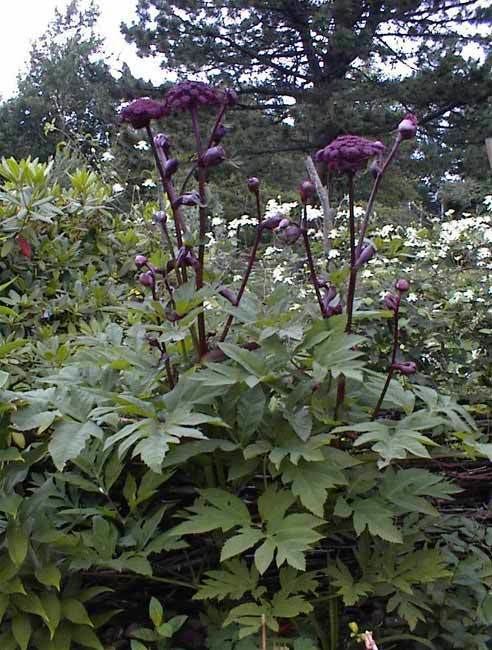 | ||
Similar Wild celery, Umbelifers, Angelica acutiloba, Angelica decursiva, Huáng Qí | ||
Angelica gigas at village plants nursery
Angelica gigas, also called Korean angelica, giant Angelica, purple parsnip, and danggui, is a monocarpic biennial or short lived perennial plant from China, Japan and Korea. It inhabits forests, grasslands and banks of streams. The roots are used in traditional Chinese medicine.
Contents
- Angelica gigas at village plants nursery
- Angelica gigas flower time lapse
- Description
- Cultivation
- Chemical components
- References
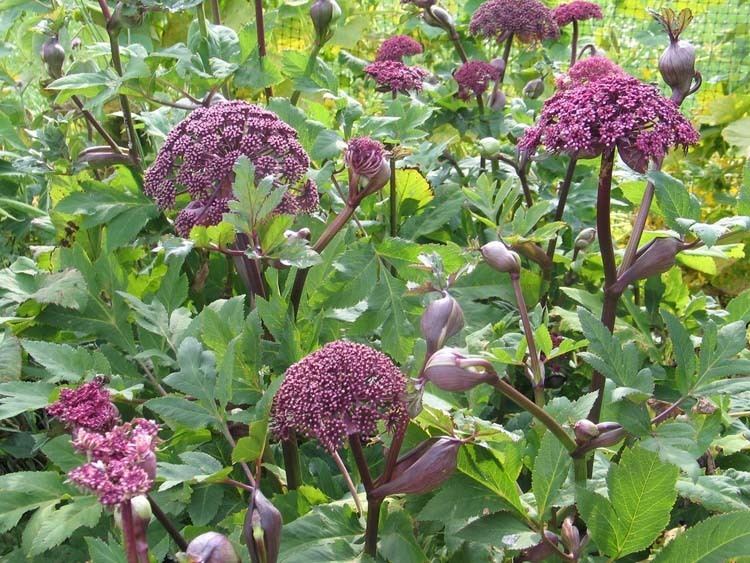
Angelica gigas flower time lapse
Description
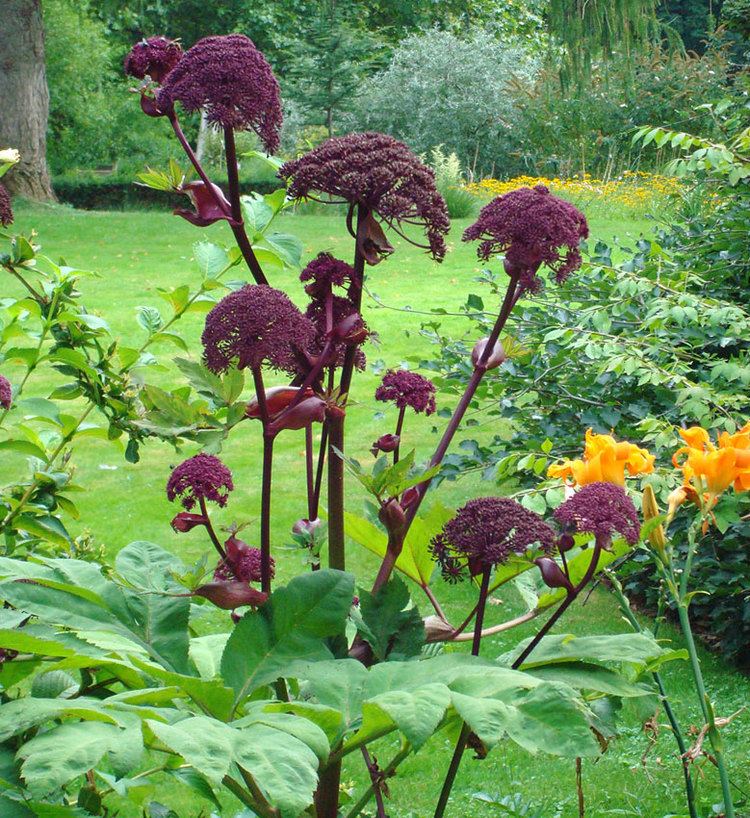
Angelica gigas is a stout plant that is 1 to 2 meters high with deep thick roots and purplish ribbed stem. Its leaf blades have a triangular-ovate outline. Korean Angelica has a 20–40 × 20–30 cm, 2–3-ternate-pinnate arrangement. The plant's purple umbel measures 5–8 cm across. Its dark purple-red obovate flowers, blooms in late summer.
Cultivation
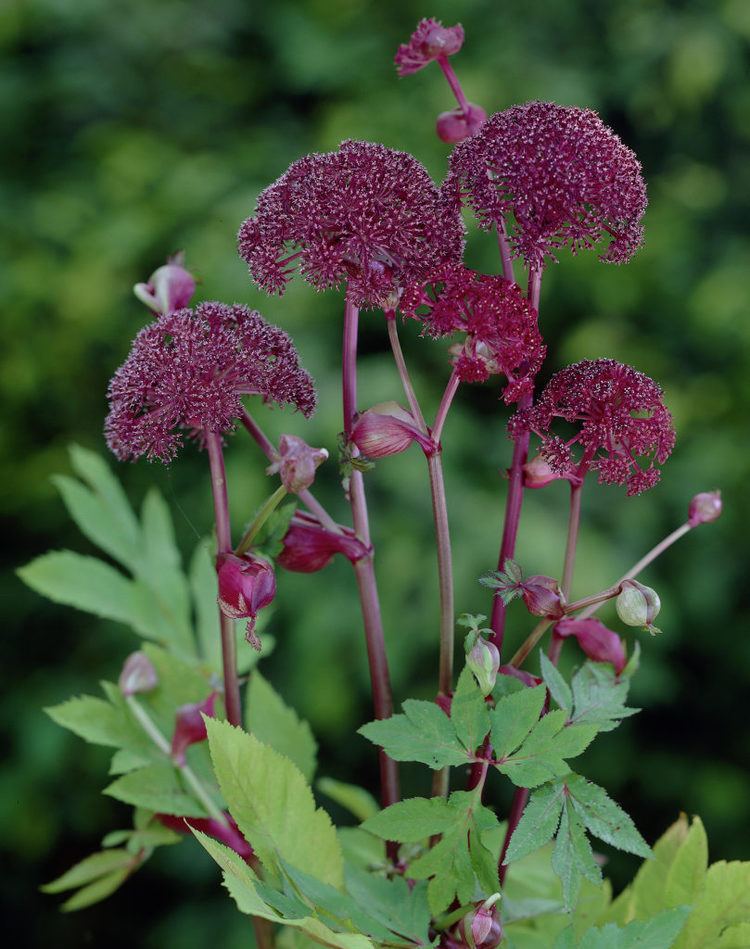
Giant Angelica prefers moist soil and full sun or semishade. The plant is best propagated through seeds in the spring. The plant is a perennial that flowers in the months of July to August.
Chemical components
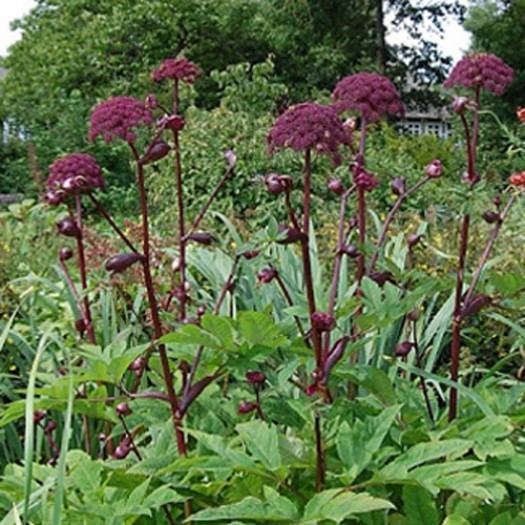
Research in 2007 has isolated a chemical from the root of the plant, a coumarin derivative called decursin, that may have anti-androgenic properties in vitro. In 2013, the main substance decursin, decursinol angelate (its isomer), JH714 (the ether form) and epoxide decursin (the epoxide form) were analyzed in vitro and in vivo. CYP isoforms were inhibited more than 50%. There was good blood brain barrier permeability in rats after oral administration of all but epoxide. Pharmacokinetic studies after oral and intravenous administration of 10 mg/kg showed that after 8 hours all test compounds stayed in the gastrointestinal tract at more than 1.5% of the dose and less than 0.5% was excreted in urine.
